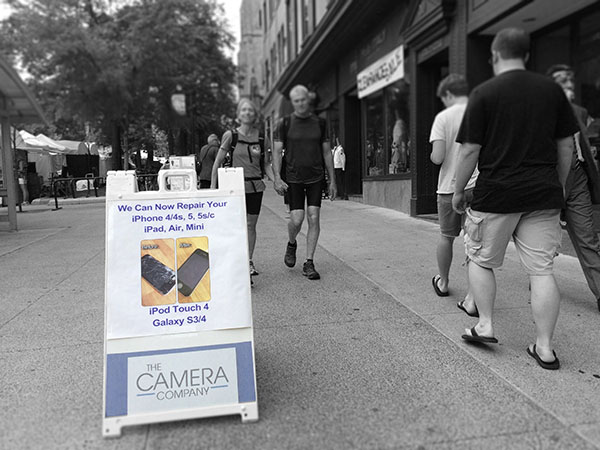The British government says that it plans to hire the U.S. gene-sequencing company Illumina to sequence 100,000 human genomes in what is the largest national project to decode the DNA of a populace.
In a regulatory filing with the U.S. Securities and Exchange Commission, Illumina said it had been picked as the “preferred partner” for the £100 million project.
Genomics England confirmed that it had chosen the California company to carry out the sequencing project. “We’ve been through the ‘bake-off’ process to find the right company to do the sequencing, and will now be entering detailed negotiations,” says Vivienne Parry, a spokesperson for Genomics England.
Zoella herself barely watches TV: “My generation, at least the ones I know, are like 70-30 YouTube”
The leading vloggers are a close-knit bunch, often appearing on each other’s channels. This cross-promotion helps to pool audiences. Zoella’s gang includes her boyfriend, her brother Joe (whose blog, now with 2m subscribers, started after hers, she insists) and Marcus Butler. There’s also Louise (aka Sprinkle of Glitter) and Tanya Burr, a make-up artist who beams advice from her Norwich bedroom, and whose diffusion line of cosmetics Zoella has recently recommended on her own vlog. “We all want to help each other so we can bring all our channels up together,” she says. “That’s absolutely what social media is all about: sharing.”
I tell Zoella she is known to the advertising world as a “crowd-sourced people’s champion” and she laughs. “That’s cool. I hadn’t heard that one before.” But she acknowledges that big brands are lining up to cash in on her popularity. “They know that there’s a way that YouTubers can connect with an audience that they can’t, even though they’ve got all the money in the world.” An example of her reach is that she has a deal with Unilever, marketing their skincare range to younger users.
Advertisers are said to be willing to pay £20,000 a month for banners on well-known vloggers’ YouTube channels, while £4,000 can change hands for each mention of their product in the video itself (it costs roughly the same for a shout-out on Twitter). Zoella doesn’t like to talk about how much she earns. But, based on the rates commanded by the most successful vloggers, her income from advertising alone could now be running at a rate of several hundred thousand pounds a year.
The news that business doesn’t want to hear
The resulting index is bad news for business: It shows that, behind the mirage of financial engineering, mergers and acquisitions, tax gadgets, share buybacks, seemingly rising profits fed by cheap government money and soaring executive compensation, the underlying reality is harsh: US business is in a long-term secular decline and has been so for decades.
The conclusion is inescapable: big hierarchical bureaucracies with legacy structures and managerial practices and short-term mindsets have not yet found a way to flourish in this new world.
The Shift Index 2009 thus anticipated the conclusion to which macro-economists are now reluctantly coming, namely, that an economy comprising mainly big hierarchical bureaucracies are undergoing a “Great Stagnation” (Tyler Cowen) or “Secular Stagnation” (Larry Summers).
The 2011 edition of the Shift Index covered industry-specific data for nine key sectors and provided a guide to the thought leadership, methodology, and data that drives the index’s metrics.
Panoramas: A Splendid Evening at Spring Green’s American Players Theatre
Tap or click to view the panoramic scene. Then pan or zoom in any direction.
Additional scenes:
Theatre entrance on a beautiful Friday evening.
Pre theatre picnic area. Another view.
We enjoyed “The Importance of Being Earnest”.
The Camera Store, circa 2014
Madison’s Camera Company has served the community well for many years. Perhaps it was unsurprising to see this sign, in 2014:

I later took a quick look at their website and found the top shopping choice unsurprising:

I’ve been keeping a log of the substantial changes in the photography world, here.
How has Restaurant Behavior Changed in 10 years?
Like most restaurants in NYC we have a surveillance system, and unlike today where it’s a digital system, 10 years ago we still used special high capacity tapes to record all activity. At any given time we had 4 special Sony systems recording multiple cameras. We would store the footage for 90 days just in case we need it for something.
The firm we hired suggested we locate some of the older tapes and analyze how the staff behaved 10 years ago versus how they behave now. We went down to our storage room but we couldn’t find any tapes at all.
We did find the recording devices, and luckily for us, each device has 1 tape in it that we simply never removed when we upgraded to the new digital system.
The date stamp on the old footage was Thursday July 1 2004, the restaurant was real busy that day. We loaded up the footage on a large size monitor, and next to it on a separate monitor loaded up the footage of Thursday July 3 2014, the amount of customers where only a bit more than 10 years prior.
A Gorgeous Vision of What Home-Grown Food Labs Would Look Like, in 2050
“The United Nations estimates that by 2050 the world will need 70 percent more food, measured in calories,” says Royal College of Arts student Johanna Schmeer, who has spent the past year working on a graduation project. “So next I was thinking about, ‘What would you do if you needed to make new foods, what application would there be?’” Schmeer is a student designer at London’s Royal College of Arts. She’s not a scientist. She’s not in a laboratory extracting enzymes from organic matter. Instead, her graduation project tackles the question: What products might be designed for these materials? When they end up in the home, how might we interact with them?
It’s no surprise that a problem of that scale has attracted the attentions of other scientists and designers around the world too. In particular, Schmeer is interested in work from a team at the Radboud University Nijmegen in the Netherlands that’s laying the groundwork for creating synthetic biological material that could be used for nutrition. Their research has shown that it’s possible to use enzymes from bacteria (found in foods and plants) in new, synthetic host materials.
If developed properly, these bio-synthetic materials could be a viable host for the enzymes to photosynthesize and produce proteins, fiber, vitamins, sugar, fat, minerals, and water. As for the actual enzymes, they could come from any number of places. In her own research, Schmeer found that one fiber-producing bacteria is found in kombucha drinks. This lab work is fairly nascent, but Schmeer says food-producing material that is half biological, half synthetic, could be a reality in around 50 years.
The Diploma is the Message: Doug Rushkoff Invents a Master’s Program That Matters
As you sit back in your Aeron chair, drinking stale office coffee and letting your eyes swim out of focus in the artificial glow of your MacBook, take a moment to consider where you went wrong. You were going to be great! You were going to write a book, or go to law school and represent the poor and oppressed, or something. Face it – it’s probably time to quit your job and do something exciting. Why not go back to school? God knows your job isn’t making you any smarter. The rat race will be there when you get back. And while your stupid friends are slaving away towards their grad degrees in fetid hellholes like Cambridge and New Haven, you could be a pioneering student of the future in the veritable heaven on Earth that is Queens, NY.
City University of New York’s Queens College and digital media theorist Douglas Rushkoff are teaming up to create a Master’s program in Media Studies for the technologically minded, socially conscious upstarts who will define the way we see the world for years to come. “Instead of training people to become marketers or to write the next useless phone app, we’re going to support people who want to see through the media, and use it to wage attacks on the status quo,” Rushkoff says. “This is media studies for Occupiers.”
The future photograph
When an expensive thing becomes free, new behaviors emerge. When a private thing becomes public, new behaviors emerge. Below, some thoughts on the swirling cloud of photographs that we are creating together.
We are in the middle of a redefinition of what constituents value in a photograph. On one hand, photographs are cheaper, which should lower the received value necessary to justify the taking of the photograph. On the other hand, abundance creates scarcity of attention and we now have always-on instant access to the best photographs, which devalues the amateur. Going forward, personal photographs will have two purposes: 1) memory of personal circumstance and 2) personal expression. What kinds of photographs will be taken when we have perfect information? The future photographer will ask themselves, what are the odds that this picture, but better, doesn’t exist already?
Federal Reserve & Financial Bubbles
The only way any of this makes sense is if you buy the primordial orthodox premise that monetary policy is neutral in the long run (or even intermediately). Taking that line will lead you to believe asset bubbles are just markets gone insane of their own accord. Then again, Yellen has largely been hostile to “markets” since her academic career brought some notice, so this is really no surprise. But to experience, right now, the repo market collateral shortage and QE’s direct impact and to still blame markets for lack of resilience is either inordinate impudence or targeted public relations.
I cannot overstate this enough, the selloff last year was a desperate warning about the lack of resilience in credit and funding. That repo markets persist in that is, again, the opposite of the picture Janet Yellen is trying to clumsily fashion. Central banks cannot create that because their intrusion axiomatically alters the state of financial affairs, and they know this. It has always been the idea (“extend and pretend” among others) to do so with the expectation that economic growth would allow enough margin for error to go back and clean up these central bank alterations. That has never happened, and the modifications persist.
